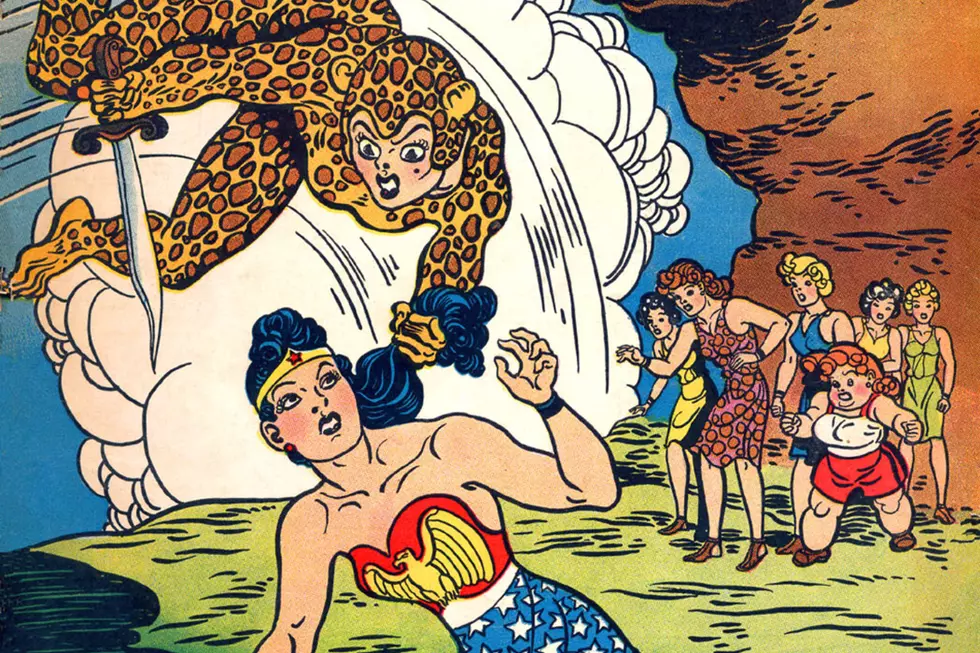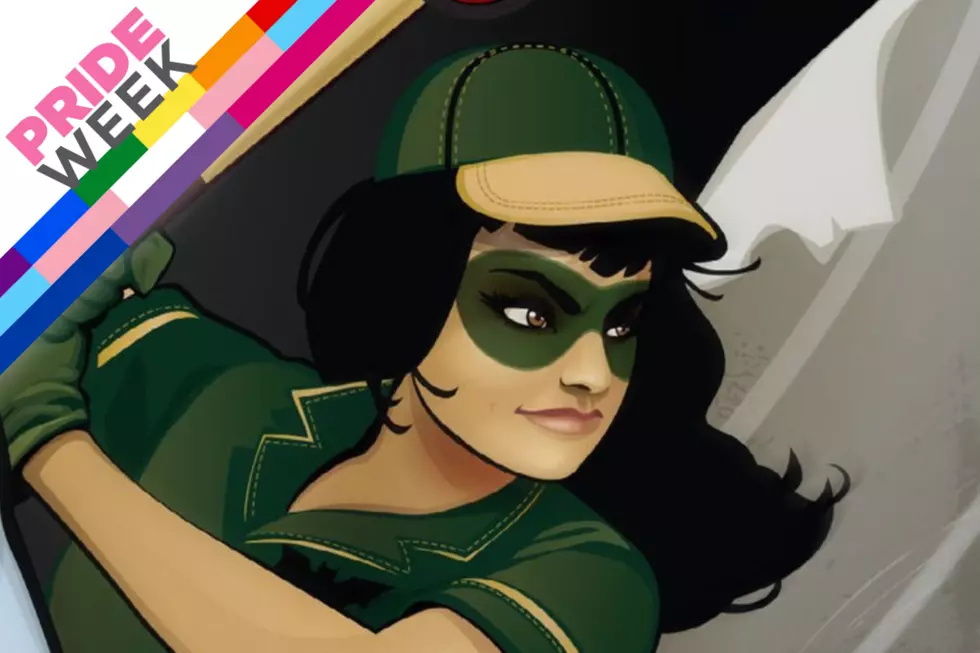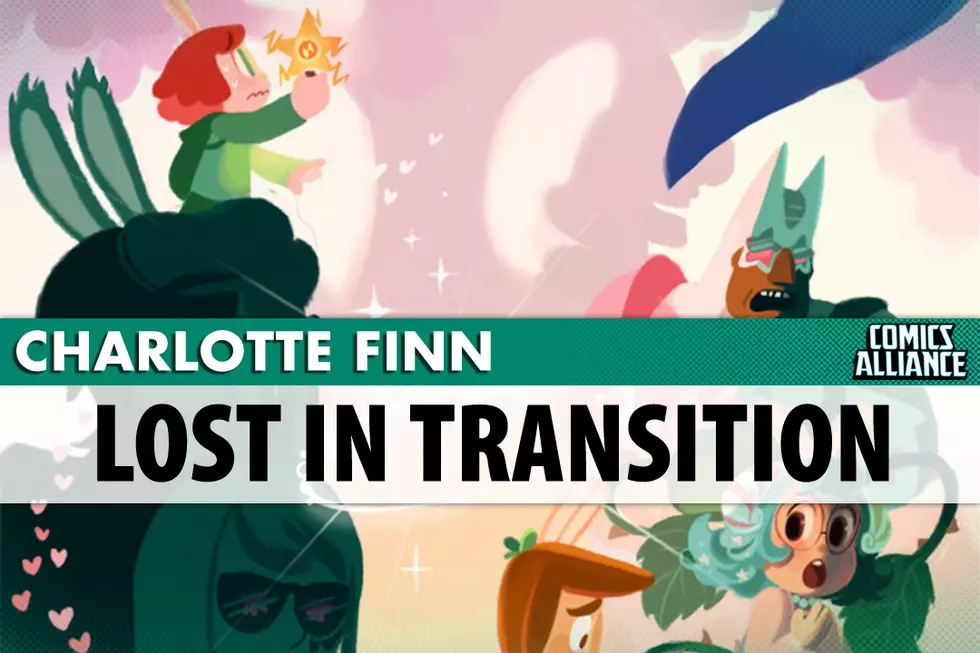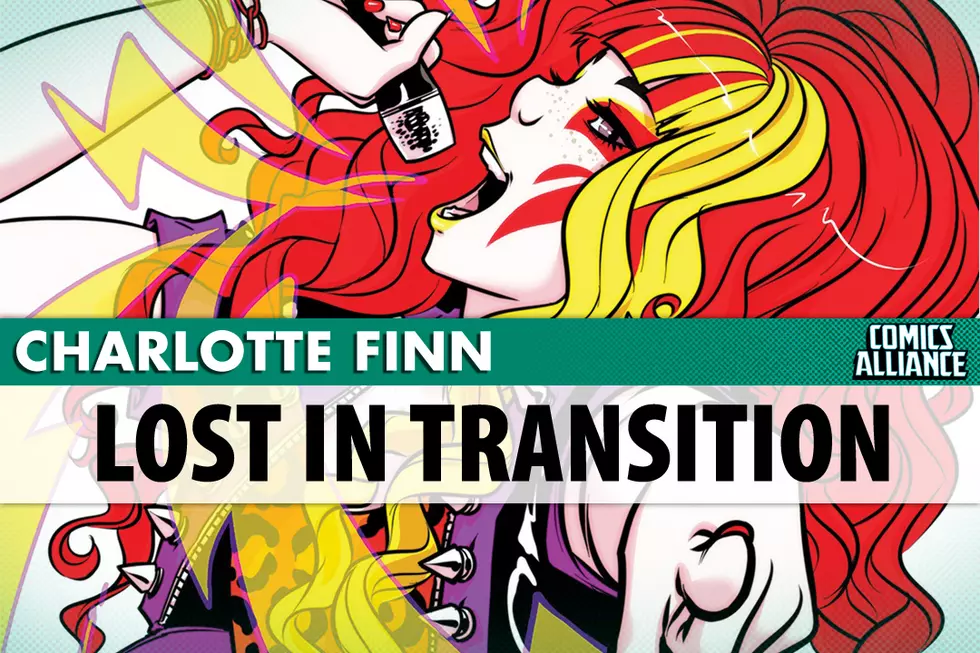
Lost in Transition: On ‘Ranma 1/2′ and Owning Your Identity
Hi, I’m Charlotte Finn. I’m a lifelong comics fan and last year, I admitted to myself that I'm transgender.
Coming out as transgender means reassessing a lot about your life, your place in the world, and what that world’s been telling you about yourself before you even realized who you really were. In this occasional series, I’m going to be applying that reassessment to comics that feature people like me, or close to being like me, and look them over with a fresh set of eyes.
Are they good? Are they bad? Are they somehow both, at the same time? In this series, I’ll offer my thoughts.
Ranma ½, Volumes 1-4
Creator: Rumiko Takahashi
Publisher: Viz Media
(In this review, I will be covering the Viz Media translations. The translation is unflipped so remember to read right-to-left.)
Ranma ½ is a good manga and deserves its status as a landmark of the medium. It's also not really a transgender manga.
This is actually fine, since not everything in this world has to be transgender-themed, my own protests to the contrary notwithstanding. But Ranma ½ is often mistaken for being transgender-themed, even by transgender people like myself who haven't figured ourselves out yet, and that is a problem.
I'm not here to condemn Ranma ½, though. I'm here to show why it's not what people often think it is.
Ranma ½ is the story of Ranma Saotome, the arranged marriage he's been strongarmed into, the woman he's expected to marry, the father who's done the arranging, the rival he has for Akane's dubious affections, his easily distracted arch-nemesis, and the woman who's sworn to simultaneously kill him and marry him. It's set at a high school, which means all of this is completely normal.
What's less than normal is that it's set in a world where magic is real, and just about everyone seems to know martial arts. As a result, Ranma, his father Genma, his rival Ryoga, and his would-be-wife/killer Shampoo are all afflicted with curses that change their forms, Akane has to fight off several dozen suitors on her way to school, and every high school competition from ice skating to gymnastics incorporates martial arts.
All of this is told with a sense of classic farce, as simple situations turn into overly complicated ones due simply to people being angry or lovestruck enough to do the dumb thing instead of the smart thing. The storytelling itself has few peers, with a wonderful sense of physical comedy that is never overwhelmed by the action sequences that buy fully into the elevated reality of the setting. Takahashi conveys stillness as well as motion, which lets her display great skill in comic timing and in setting up great payoffs for physical comedy.
It's high school, so of course: everything is a high-stakes struggle, fought with overwhelming force. This dovetails well with the central magical component being curses and fluid forms, since when you're going through puberty, your body is often a stranger. Everything in the series is misunderstandings, flared tempers, and struggles that seem like life-or-death situations simply because when you're young, everything seems like it's life-or-death.
Taken together, it's obvious why Ranma ½ is as influential as it is, but that influence means that when people first hear, or think, about transgender issues, it'll be one of the examples that comes to mind. It's not hard to see why, since the main character ostensibly is someone who transitions between genders whenever doused with hot or cold water.
When I first heard about the premise for Ranma ½, and about its protagonist's circumstances, my reaction was "really?" I was instantly intrigued. Deep down, without knowing why (since I wasn't even out to myself yet) I empathized with the character, even though Ranma Saotome isn't transgender as we know the term --- just adjacent enough to give me the wrong idea. The key missing ingredient is agency. Ranma does not want this curse. He actively resists it, and wants to go back to being a normal cisgender boy.
The term for this in fandom is "forced feminization"; the idea of imposing a woman's gender role on a boy as a joke or a curse (and it is stated, in the manga, as being a curse.) Forced feminization is defined by its lack of declaration and agency. By contrast, the way being transgender works is that declaration of your own gender identity has to happen before you work your way --- by whatever path you can or are willing to take --- towards it. By having the so-called transition happen without the declaration --- and by having the declaration never show up --- the transgender elements of Ranma ½ put the cart before the horse.
None of this is necessarily a problem if Ranma ½ is not perceived as being about a transgender character, but through no real fault of Rumiko Takahashi's, the series --- and the trope of the gender-bender --- is tied in with the transgender identity in the popular consciousness. When thinking about this essay series, Ranma ½ came to my mind far more readily than mangas about actual transgender characters, which I hope to cover in the coming months.
When it comes to transgender themes, there is a link there, but not in the way someone may expect. When Ranma is doused with cold water, Ranma winds up with a body and a social status that feels wrong, and which Ranma plainly doesn't want --- much like how many transgender people feel physical and social dysphoria, a feeling of disconnect or being out of sync with one's body or social role.
Ranma still calls himself a "he," except in situations where Ranma is around people who aren't in on his secret --- in other words, around people Ranma isn't out of the closet to yet. Despite his protests, many people insisting on calling Ranma a girl when Ranma's curse is active, essentially defining Ranma by the presence or absence of sexual characteristics. All this goes away with a dose of hot water, however, and once dosed, Ranma's gender identity is only questioned in relation to the other form he currently isn't in.
Ranma isn't a boy who turns into a girl. Ranma is a cisgender boy who turns into a transgender boy.
If this were explicitly stated as such, this would be far less of an issue. But it's muddled. So without explicit declaration, we have to rely on the implicit subtext and allegory. The problem is that outside of places like Iran and how it treats its gay and lesbian citizens, hardly anyone in our world starts out as the cisgender version of their gender identity and is then forced into a transgender version of the same. So Ranma's journey doesn't work well as an allegory, because again, there's a lack of agency and declaration.
Even to the extent that it does work as allegory, nearly everyone in the world treats it as a joke or as a curse. The impression that I got from that, with this being one of my first brushes with media that plays around with notions of gender, is that being transgender is a joke or a curse. And I certainly didn't want to be laughed at or reviled, so I pushed down any uncertainties about who I was.
The closest Ranma ½ comes to a real-world gender expression is genderfluidity --- people who go back and forth between gender expressions. Even then, genderfluid people still declare themselves to be so before they start presenting as one gender or the other, so there's still the issue of the lack of agency. Additionally, the manga defines gender by reproductive characteristics --- even the manga's cover blurb describes it as "gender shifting" and Ranma as a "half-guy, half-girl" --- and a large part of transgender and genderfluid/genderqueer identity is the decoupling of reproductive sex characteristics and gender.
Again, if the manga had been clearer that Ranma is a boy because Ranma says he's a boy, this would be far less of an issue. But it's not. And again, none of this is a problem in a world with a more robust understanding of gender issues in general and transgender issues specifically --- but that's not our world, not yet.
Right now, the trope of "zappo, now you look like a different gender, that's funny/horrible" is arguably more common in comics than stories of actual transgender people, i.e. people who have declared themselves transgender. Imagine how frustrating it would be if comics were filled with more not-quite-there allegories for, say, black people, than with actual black people --- never mind getting so far as actual well-written black people in good stories. That's where transgender people are at right now.
It's not specifically the fault of Ranma ½ that the comics and manga landscape for transgender people is like this --- especially since Ranma in the manga is just one involuntary shapeshifter among many, so if anything the closer analogy should be lycanthropy. But that's how the cultural version of the tragedy of the commons works --- everyone can blamelessly create what's best for them, and in the aggregate, behave harmfully towards the group as a whole.
Hopefully in the future, transgender representation in comics will improve to the point where we can write off Ranma ½'s questionable transgender politics as a product of its time, and instead enjoy it the way it was meant to be enjoyed – as classic screwball comedy, with beautifully choreographed battles and characters treating the survivable-in-retrospect experience of high school with the dread weight of a compressed star.
More From ComicsAlliance


![Lost in Transition: ‘Demon Knights’, Shining Knight, And the Power of Clarity [Fantasy Week]](http://townsquare.media/site/622/files/2016/10/lostintransition-demonknigh.jpg?w=980&q=75)






